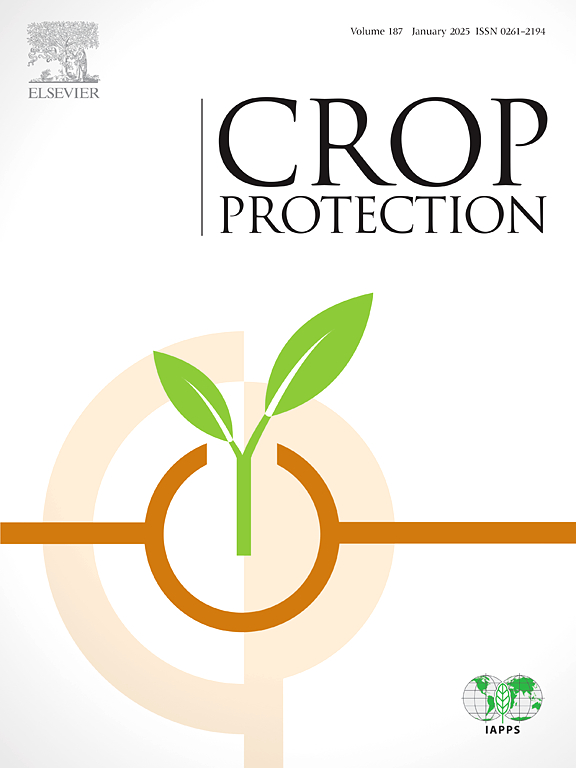Effect of defense enzyme activities, endogenous SA and MeSA in tea plants on the host adaptability of Toxoptera aurantii (Hemiptera: Aphididae)
IF 2.5
2区 农林科学
Q1 AGRONOMY
引用次数: 0
Abstract
Toxoptera aurantii, a predominant pest species on tea plants, significantly hinders both the yield and quality of tea production. Elucidating the factors influencing host adaptability is a crucial approach for effectively managing T. aurantii proliferation. This study assessed the adaptability of T. aurantii to seven different tea cultivars using an age-stage, two-sex life table. Furthermore, the variations in the activities of PPO, POD, PAL, and SOD, along with the differences in the levels of SA, MeSA, and catechins, were compared between susceptible (HJY) and resistant (QC1 and QC10) cultivars. The study revealed significant disparities in the adaptability of T. aurantii to different tea cultivars. On HJY, aphids exhibited the shortest developmental duration, the longest total lifespan, and the maximum reproductive quantity; in contrast, these metrics were reduced on QC1 and QC10. Moreover, following the infestation by T. aurantii, the activities of PPO, POD, PAL, and SOD in tea plants exhibited a marked increase. The activities of POD and SOD in QC1 were significantly higher than those in HJY and QC10, while the increase in PAL activity in QC1 and QC10 far surpassed that in HJY. Notably, lower levels of SA, MeSA, and catechins were observed in HJY compared to those in QC1 and QC10. This study offers an initial elucidation of the factors affecting the host adaptability of T. aurantii, thereby providing a theoretical foundation for screening aphid-resistant tea germplasms.

求助全文
约1分钟内获得全文
求助全文
来源期刊

Crop Protection
农林科学-农艺学
CiteScore
6.10
自引率
3.60%
发文量
200
审稿时长
29 days
期刊介绍:
The Editors of Crop Protection especially welcome papers describing an interdisciplinary approach showing how different control strategies can be integrated into practical pest management programs, covering high and low input agricultural systems worldwide. Crop Protection particularly emphasizes the practical aspects of control in the field and for protected crops, and includes work which may lead in the near future to more effective control. The journal does not duplicate the many existing excellent biological science journals, which deal mainly with the more fundamental aspects of plant pathology, applied zoology and weed science. Crop Protection covers all practical aspects of pest, disease and weed control, including the following topics:
-Abiotic damage-
Agronomic control methods-
Assessment of pest and disease damage-
Molecular methods for the detection and assessment of pests and diseases-
Biological control-
Biorational pesticides-
Control of animal pests of world crops-
Control of diseases of crop plants caused by microorganisms-
Control of weeds and integrated management-
Economic considerations-
Effects of plant growth regulators-
Environmental benefits of reduced pesticide use-
Environmental effects of pesticides-
Epidemiology of pests and diseases in relation to control-
GM Crops, and genetic engineering applications-
Importance and control of postharvest crop losses-
Integrated control-
Interrelationships and compatibility among different control strategies-
Invasive species as they relate to implications for crop protection-
Pesticide application methods-
Pest management-
Phytobiomes for pest and disease control-
Resistance management-
Sampling and monitoring schemes for diseases, nematodes, pests and weeds.
 求助内容:
求助内容: 应助结果提醒方式:
应助结果提醒方式:


